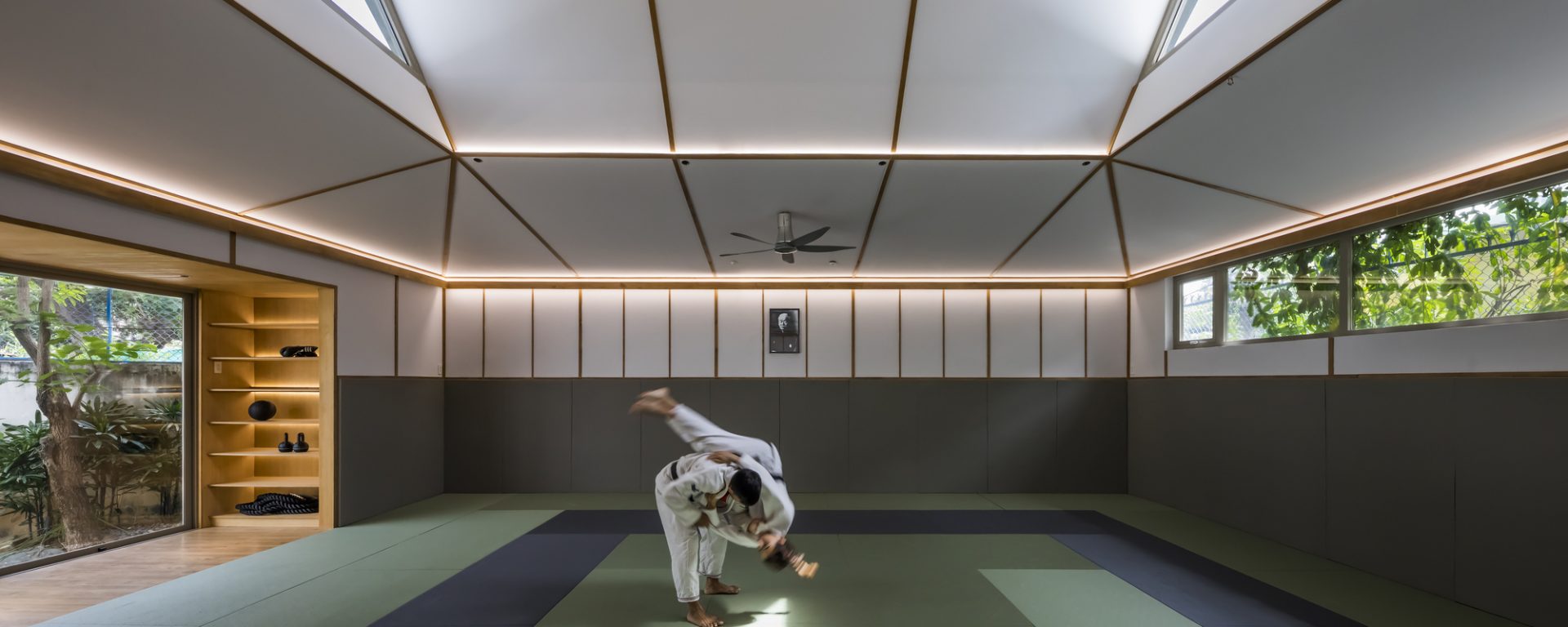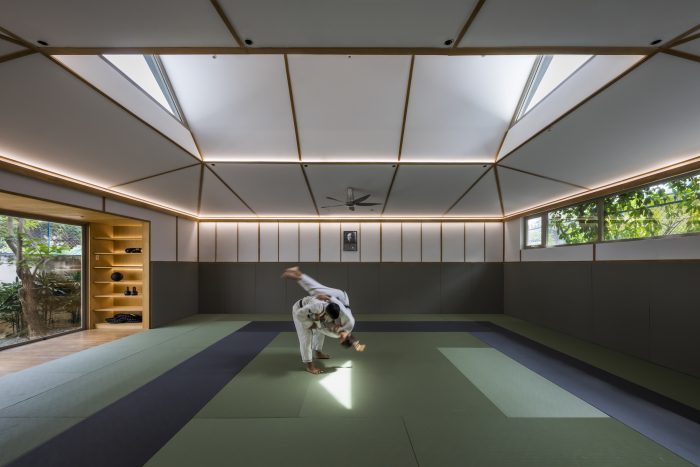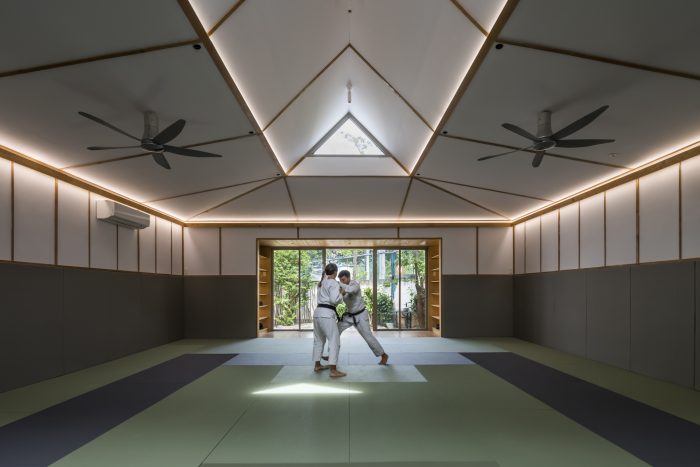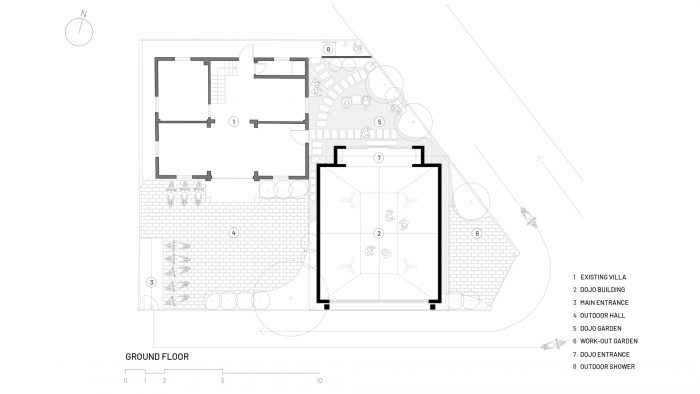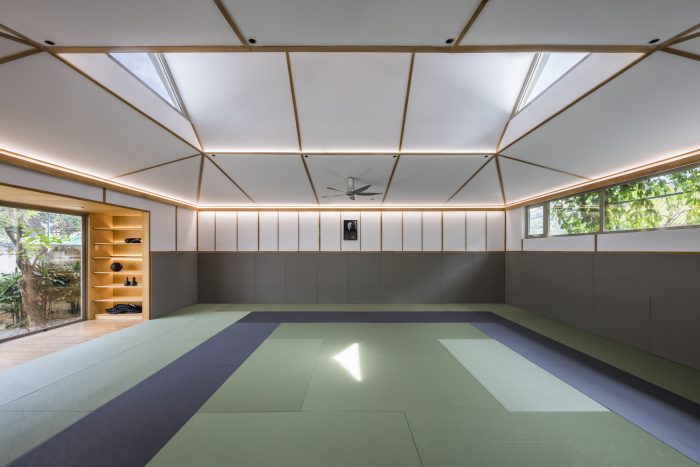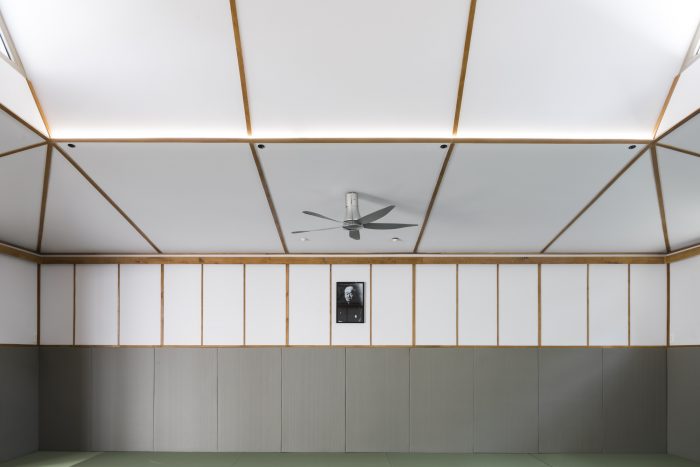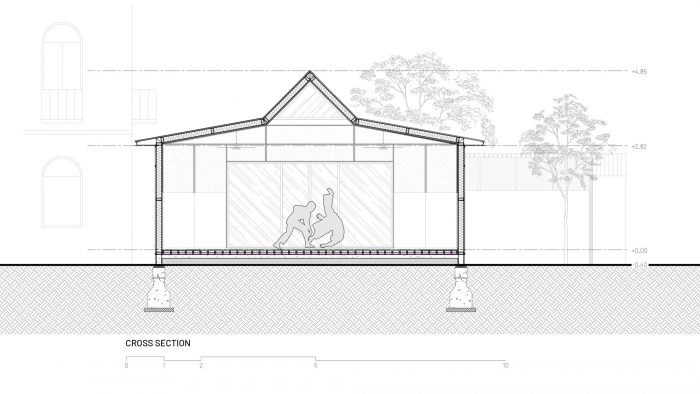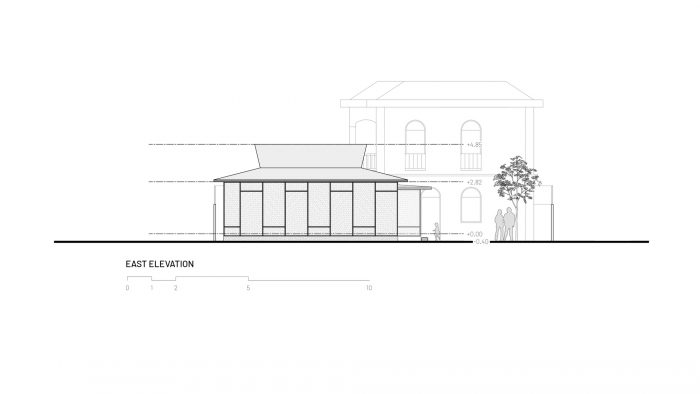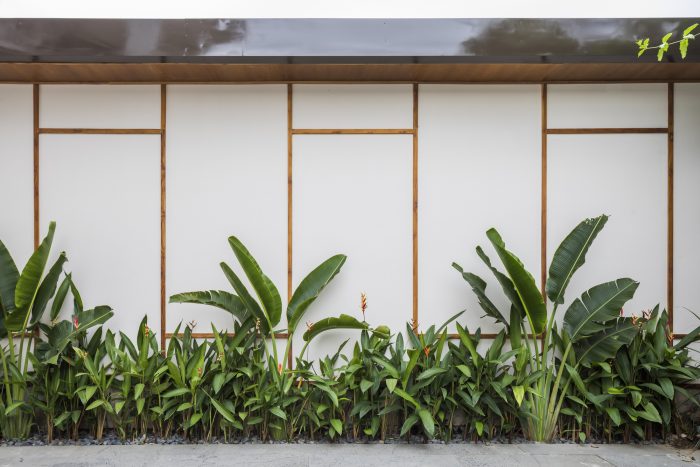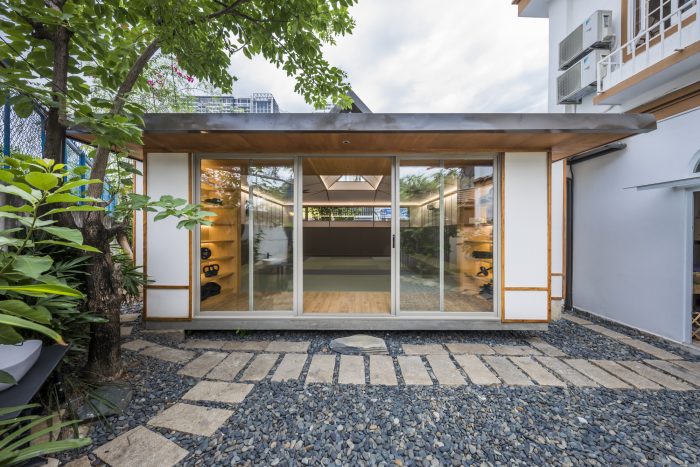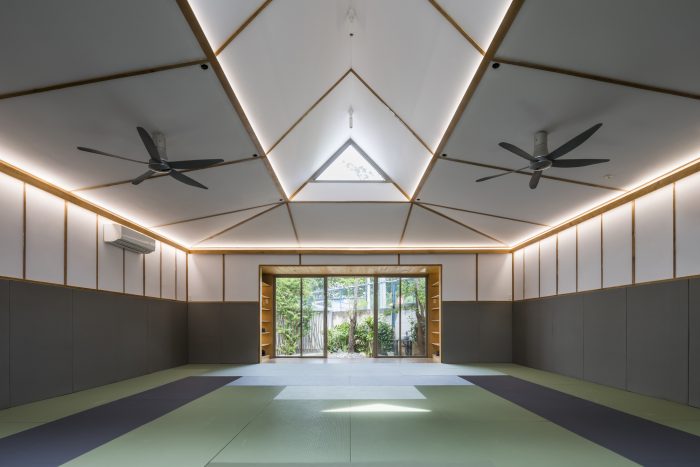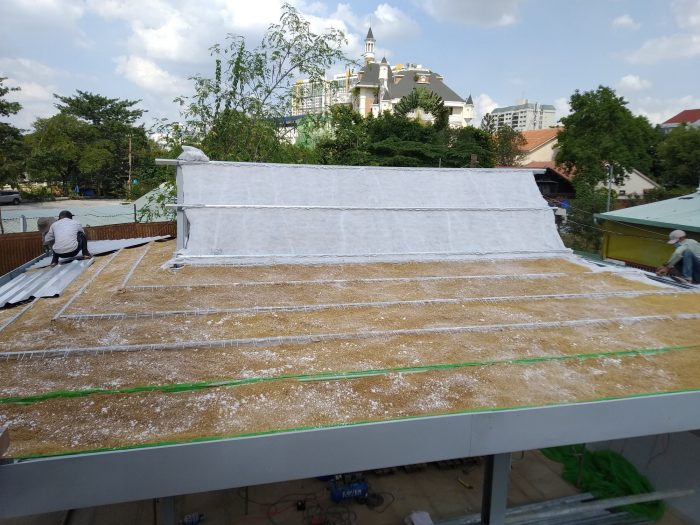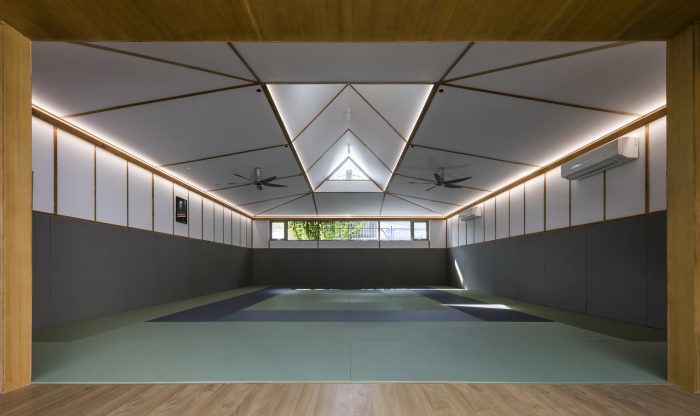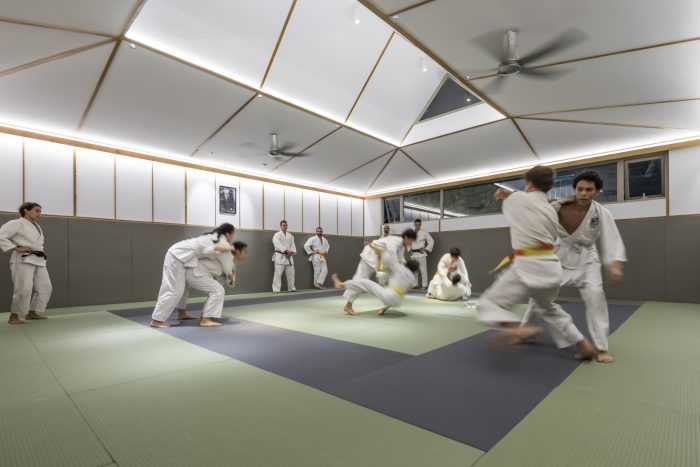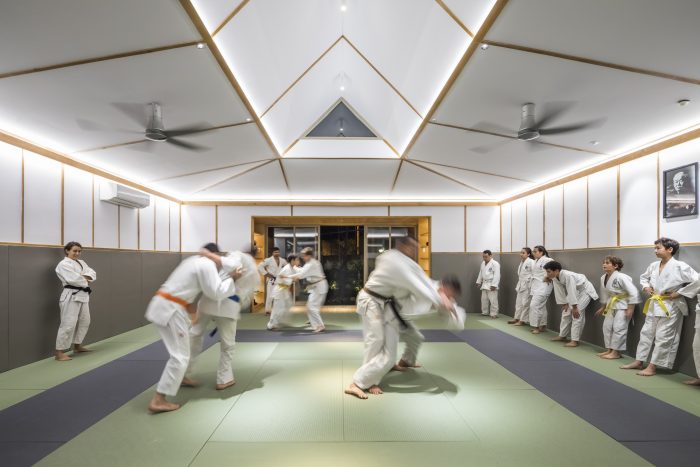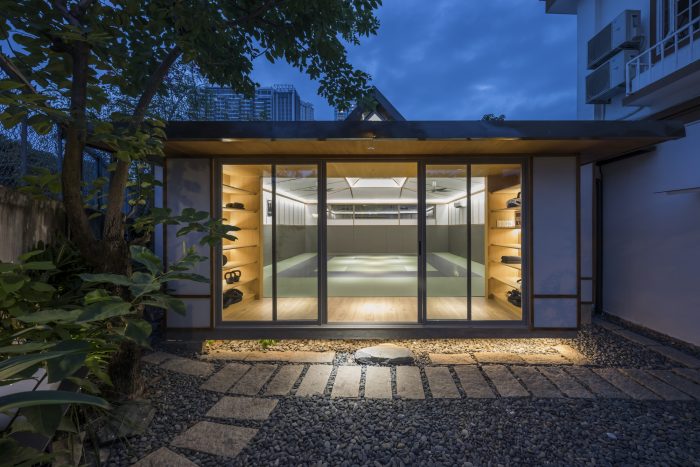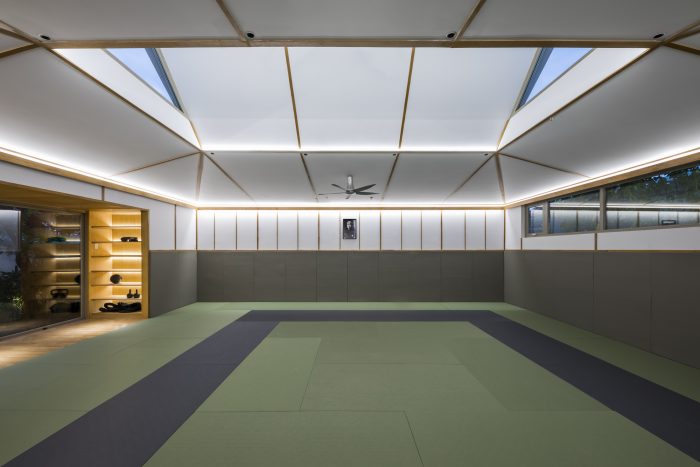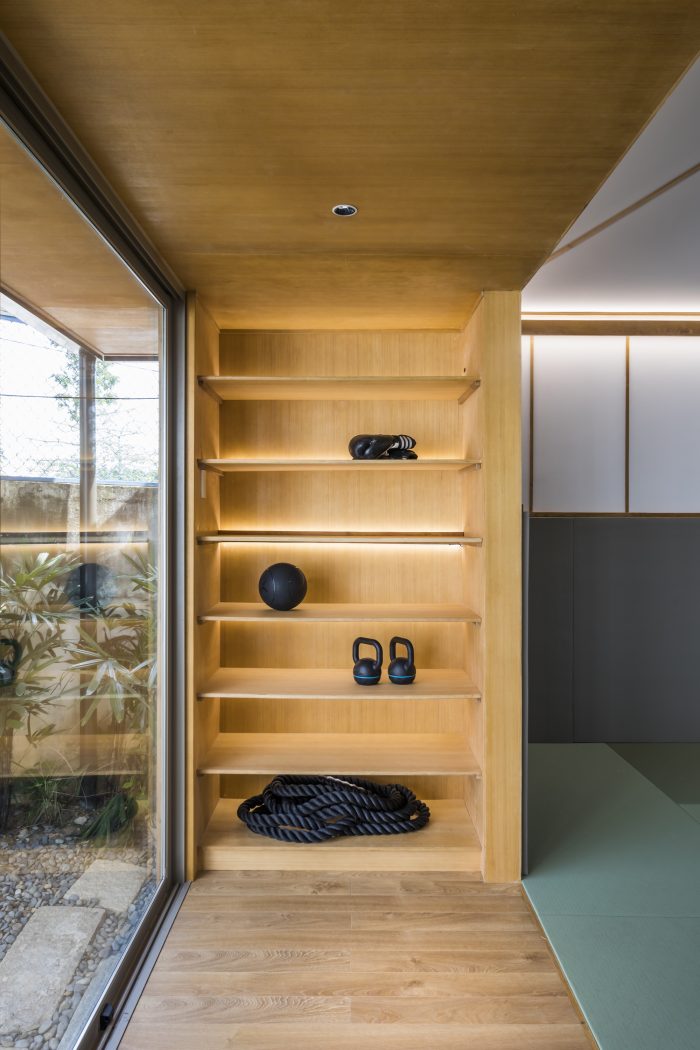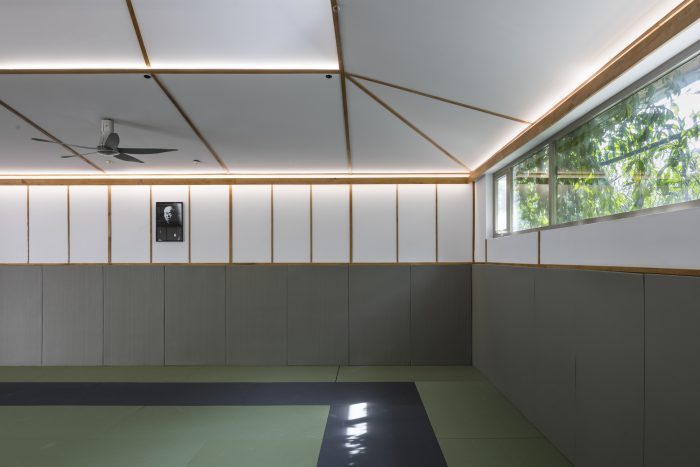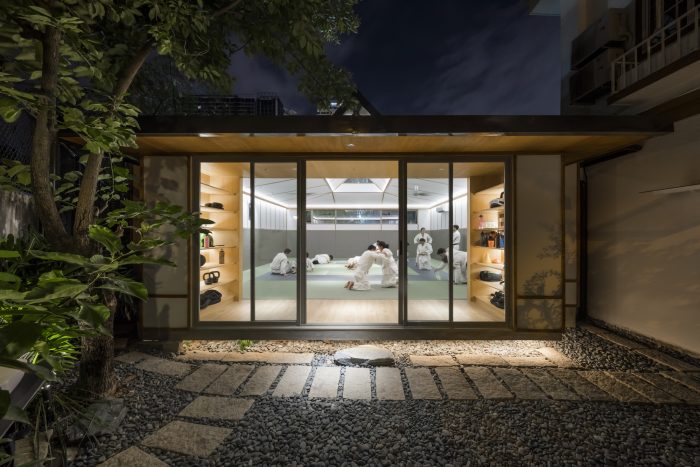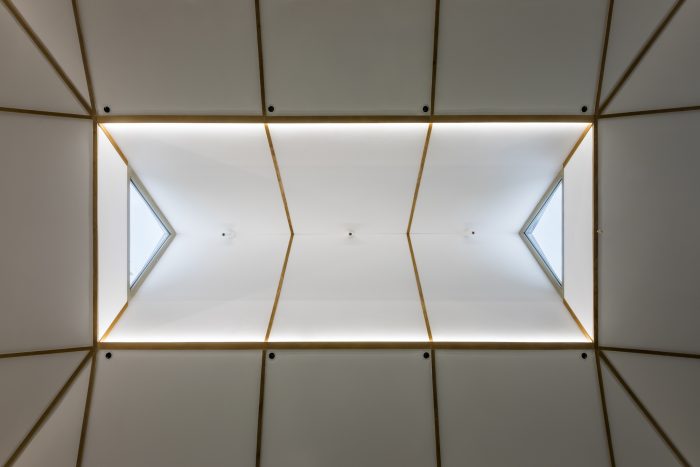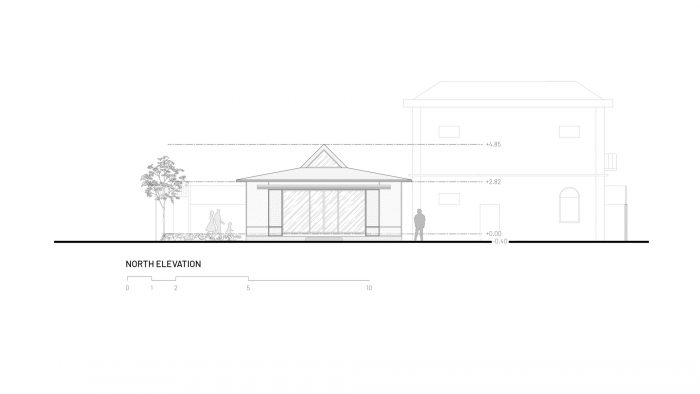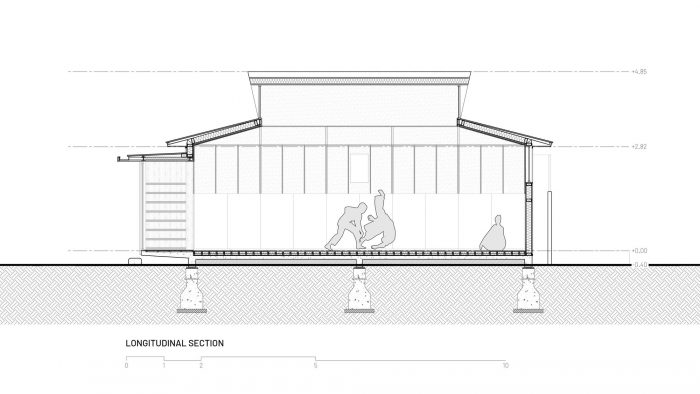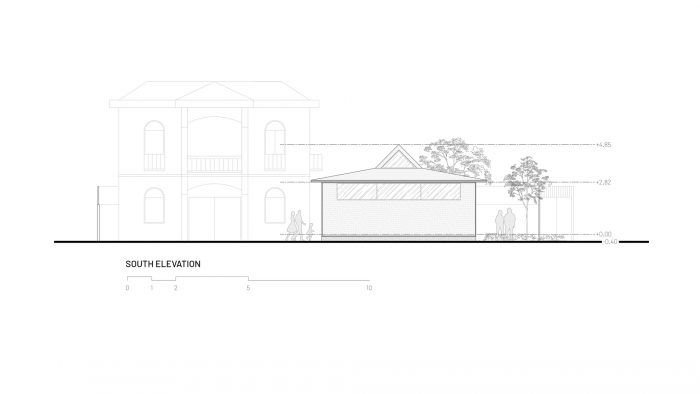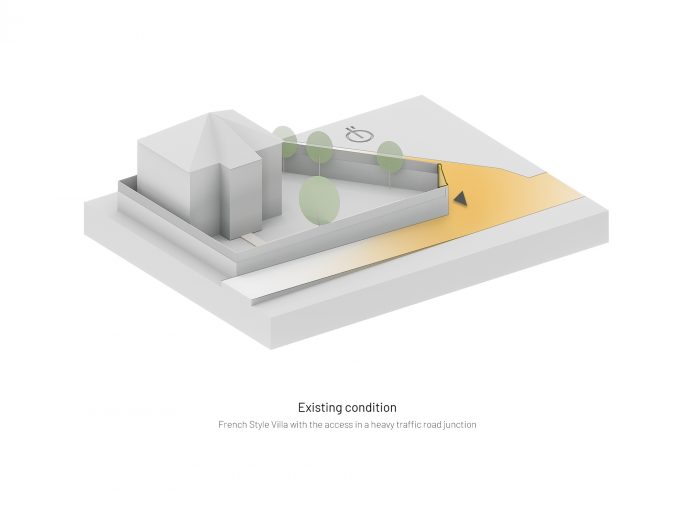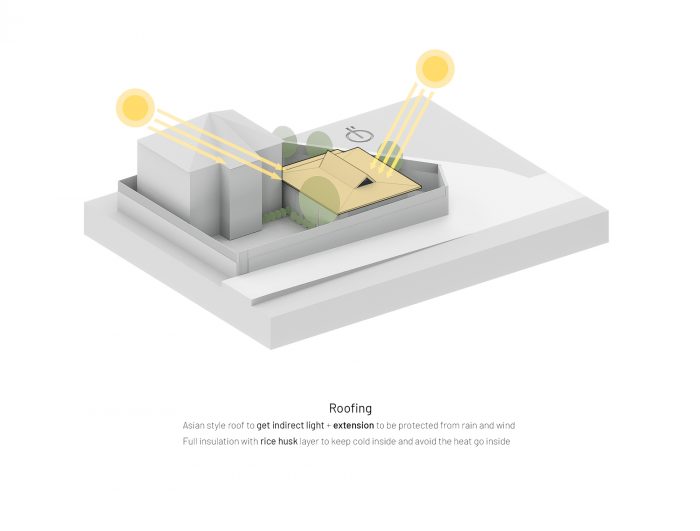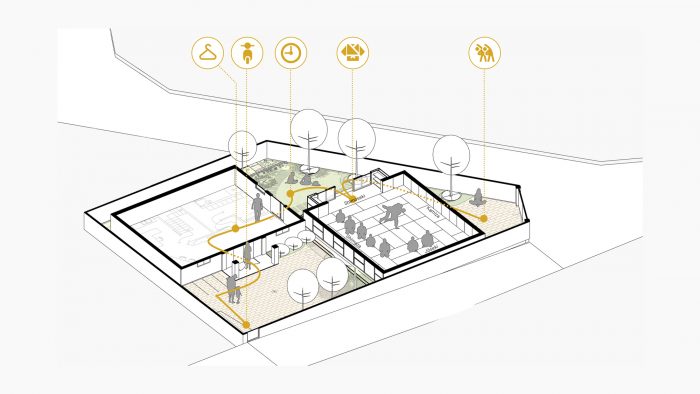T3建筑事务所刚刚在西贡(越南)设计了第一个道场。该项目开始时,是一个很好的文化混合。”Dojo “是建筑的日本名字,这意味着建筑将与日本传统的柔道练习规则相结合。然后,道场位于一个古老的法国风格的别墅的花园里,所有这一切一起在越南胡志明市的活力。
T3 Architects just designed the first Dojo in Saigon (Vietnam). The project started with a good mix of cultures: ” Dojo ” is the Japanese name of the building which means that the building will be built with a certain of Japanese traditional rules for the right practice of Judo. Then, the Dojo is located in the garden of an old French style Villa, and all this together in the dynamic city of Ho Chi Minh, Vietnam.
设计和建造与主要的可持续发展的原则,从一开始,T3就正确地把道场放在花园里,利用现有的别墅来保护和正确的导向,以避免主要的大雨/风,并设计相应的开口。
Designed and built with the main sustainable principles in mind from the beginning, T3 placed the Dojo correctly on the garden using the existing Villa to be protected and right-oriented to avoid the main heavy rains/winds and designing the openings accordingly.
由于现有的别墅将作为道场办公室的一部分被租用,并作为柔道练习者的联合办公空间,T3决定通过现有的建筑做主要的循环,在那里放置一个新的更衣室。此外,我们决定将主入口迁移到地块旁边的巷子里,在巷子里建立一个新的大门,避免从现有的危险道路交叉口进入。
As the existing Villa will be rented as part of the Dojo office and as a co-working space for Judo practitioners T3 decided to do the main circulation through the existing building where a new changing room is placed. Moreover, we decided to relocate the main entrance creating a new gate in the alley next to the plot avoiding the access from an existing dangerous road junction.
除此之外,作为最初的打算,T3还注意在道场的位置上保留了所有现有的老树,在地块周围创造了三个不同的花园,一个在入口处作为大厅欢迎,一个在后面,有更多的隐私,父母可以在训练时等待孩子,另一个用于锻炼,所有这些都有足够的自然土壤,让雨水通过,避免了这个城市地区常见的洪水。
In addition to this, as first intentions, T3 took care to place the Dojo to keep all the old existing trees creating three different gardens around the plot, one at the entrance for welcoming as a hall, one in the back with more privacy and where parents can wait for the kids while the training is happening, and another one for work-out, all of them with enough natural soil to allow rainwater to go through avoiding the common flooding in this area of the city.
由于建筑是有空调的,所以道场的墙体采用了全保温材料,所有开口处都采用了双层玻璃,屋顶采用了稻壳保温材料,这种材料既环保又经济。由于所有这些,该建筑具有高能效,为客户提供了低能耗。
As the building is air-conditioned, the Dojo is built with full insulation in its walls, double glazing in all the openings and rice husk insulation for the roof, which is an ecological and affordable material. Thanks to all of this, the building has high-level energy efficient providing a low-energy consumption to the clients
最后但并非最不重要的是,考虑到我们都生活在一个动态的、多变的时代,该项目被设计成可拆卸的(主体结构、地板、墙壁、榻榻米……),为客户提供了在需要时将整个建筑搬到另一个小区的选择。将上述可持续发展的原则评论、柔道练习的美感、创意和功能设计结合在一起,最终成为一个有意义的项目,而且预算非常有竞争力。
For the last but not least, taking in consideration the dynamic and changeable times we all live, the project has been designed to be dismountable (main structure, flooring, walls, tatami…) to provide the client with the option to move the whole building to another plot in case it is needed. Putting together the sustainable principles comments above, the beauty of the practice of Judo, and the creative and functional design makes finally a meaningful project with a very competitive budget.
建筑师: T3 ARCHITECTS
占地面积: 80 m²
年份:2020年
摄影:Hiroyuki Oki
制造商:AutoDesk, An Cuong, Daikin, Cemboard, EBLOCK, Panasonic, Trimble Navigation, Viet Nhat Glass, Xingfa
Lead Architect:Charles Gallavardin, Tereza Gallavardin, Guillermo Medina Banderas
建筑师:Hai Ta Quang
承包商:Harmonie
MEP:Harmonie
结构工程师:Harmonie
灯光设计:Kobi Lighting Studio
城市:胡志明市
国家:越南
Architects: T3 ARCHITECTS
Area: 80 m²
Year: 2020
Photographs: Hiroyuki Oki
Manufacturers: AutoDesk, An Cuong, Daikin, Cemboard, EBLOCK, Panasonic, Trimble Navigation, Viet Nhat Glass, Xingfa
Lead Architect:Charles Gallavardin, Tereza Gallavardin, Guillermo Medina Banderas
Architect:Hai Ta Quang
Contractor:Harmonie
MEP:Harmonie
Structure Engineers:Harmonie
Lighting Design:Kobi Lighting Studio
City:Ho Chi Minh City
Country:Vietnam

